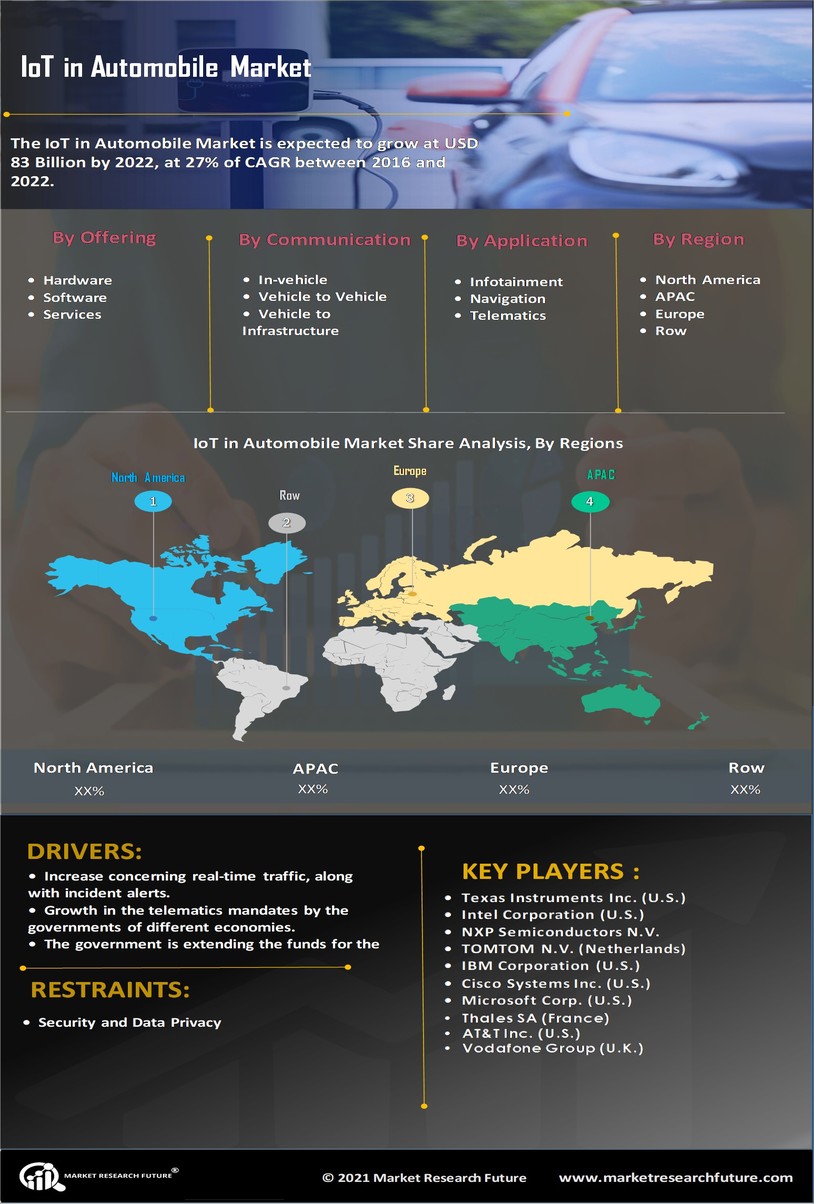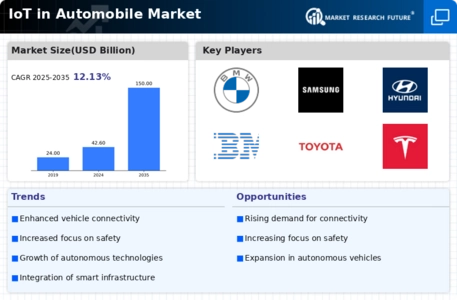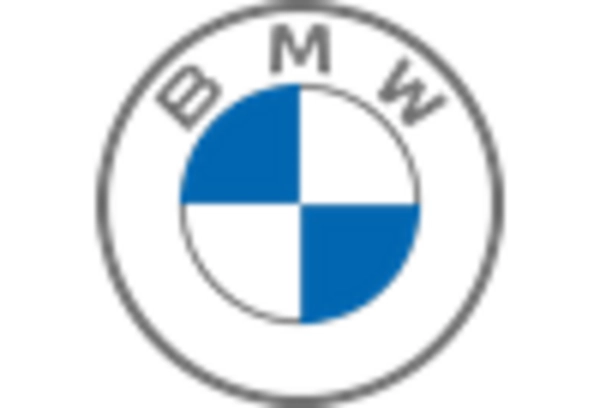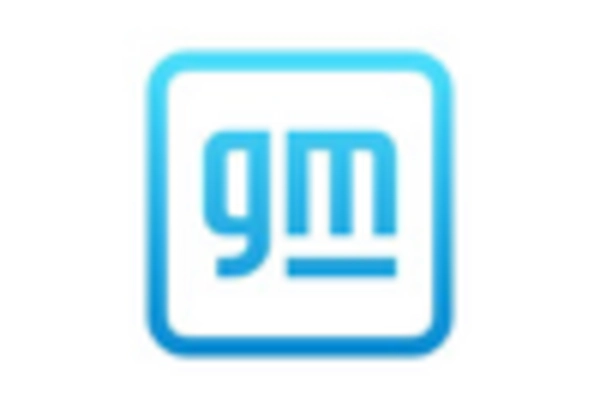The IoT in Automobile Market has been experiencing rapid development, driven by connectivity, the increasing adoption of smart devices, and a shift towards electric and autonomous vehicles.As the industry embraces transformative technologies, competitive insights become crucial for understanding the landscape, where traditional car manufacturers are integrating advanced IoT solutions into their offerings.
Companies are investing in smart transportation systems, real-time vehicle tracking, driver behavior analytics, and predictive maintenance technologies to enhance the user experience and improve safety and efficiency.
The race is on to innovate, differentiate, and cater to evolving consumer demands, making it necessary for players in this market to understand their competition and identify strategic opportunities that align with their growth objectives.The interplay of established automakers with tech companies further complicates the competitive landscape, with partnerships and collaborations becoming increasingly common to enhance technological capabilities and deliver connected Enterprise.
BMW has crafted a formidable presence in the IoT in Automobile Market by leveraging its deep-rooted expertise in engineering and design. The brand focuses heavily on integrating IoT technologies within its vehicles, aiming to enhance customer experiences and overall vehicle performance.
BMW’s strengths lie in its commitment to connectivity features, advanced driving assistance systems, and smart infotainment solutions. The company has continuously pushed the envelope of innovation, incorporating advanced analytics and cloud services into its offerings, further solidifying its position in the market.
With a strong legacy of prestige and reliability, BMW successfully projects a competitive edge through its high-quality vehicles equipped with state-of-the-art IoT solutions, which not only meets consumer expectations but also sets benchmarks for the industry.
Samsung plays a significant role in the IoT in Automobile Market by leveraging its technological prowess to drive advancements in connected vehicle technologies.Focused on creating smart mobility solutions, Samsung offers key products and services that include hardware components, in-car entertainment systems, and IoT connectivity solutions that facilitate vehicle-to-everything communication.
Their extensive market presence is reinforced by strategic partnerships and collaborative ventures aimed at integrating their technology with automotive manufacturers worldwide. With a strong emphasis on research and development, Samsung continually enhances its offerings in the realms of safety, user experience, and vehicle efficiency.
The company's strengths also include its substantial financial resources and its history of mergers and acquisitions, allowing for an accelerated entry into emerging technologies and markets, further enriching its competitive position within the IoT in Automobile Market.


















Leave a Comment